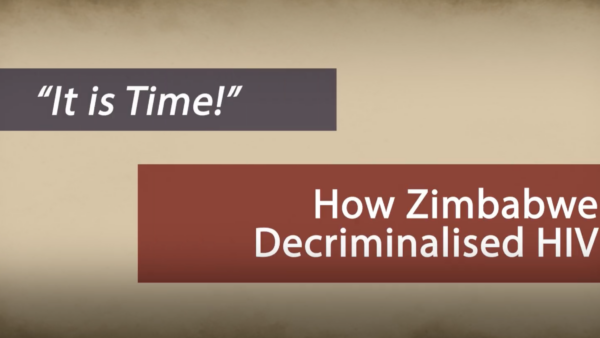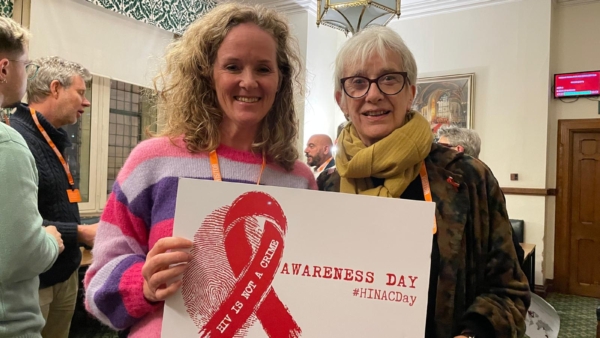Tuesday 12 July 2016
Published to coincide with IAS 2016 conference that opens in Durban next week, the PARTNER study showing the impact of HIV treatment (ART) on reducing transmission will benefit millions of people globally.
The results set a new challenge about whether transmission is anything other than a theoretical risk when someone is taking effective ART. This reverses the common assumption that, by definition, some level of risk always exists when one partner is HIV positive.
The PARTNER study provides good evidence that undetectable viral load might be a threshold below which sexual HIV transmission does not occur. The importance of the PARTNER study is that it included both gay and straight couples, that it measured risk in people who were not using condoms and that it estimated absolute risks.
Previous studies have been almost exclusively in heterosexual people who still reported high rates of condom use. The PARTNER study provides more than three times the amount of follow-up time from people not using condoms than all the previous studies combined. This includes 500 couple-years of follow up from people having anal sex without condoms.
Methods
Between September 2010 and May 2014 the PARTNER study prospectively enrolled 1166 serodifferent couples at 75 clinical sites in 14 European countries. Entry criteria included that the positive partner had an undetectable viral load on ART and that the couple were not always using condoms when they had sex.
Follow-up included routine sexual health checks (including HIV testing for the negative partners) and each participant also completed sexual history questionnaires to look at risk for different activities. Couples were only included in the final analysis when the most recent viral load for the positive partners was undetectable – defined as <200 copies/mL. The primary endpoint was the rate of within-partner transmissions, determined by phylogenetic analyses for all couples in which the negative partner became positive.
Results
Of 1166 couples enrolled, 1004 couples had at least one follow-up visit and 888 couples provided 1238 couple years of follow-up (median 1.3 years (IQR 0.8 to 2.0) per couple. This included 548 heterosexual (HT) couples and 340 gay male couples. The main reasons for data not being included in the follow-up analysis was: not yet reaching first follow-up visit (n=162), lack of HIV test (n=20), use of PEP or PrEP (n=9), no condomless sex (n=15), viral load >200 copies/mL (n=55) and lack of viral load result (n=17). There were no significant differences between couples who contributed to follow-up data compared to those who didn’t.
Although 11 people became HIV positive, none of these infections were phylogenetically linked transmissions. This was after at least 58,000 distinct times when couples had penetrative sex without condoms.
Baseline demographics were reported – as with all results – by categories of HIV status, gender and sexuality, with some differences between groups. This makes summarising results complex, but the median age ranged from 40 to 44 (with IQR overall ranging from 31 to 50 years). Gay men and HT women were a few years younger than HT men. Approximately 80% of the HT men were white compared to 70% of women and 90% of gay men. A higher percentage of gay men had education to college/university or higher (approximately 50% compared to 19% to 35% for heterosexuals. Although some of these differences were significant, other than there were fewer very young adults involved, they reflect the diversity of people living with HIV.
HIV positive partners had been on ART for a median of 10.6 (IQR: 4.3 to 15.6), 7.5 (IQR: 3.3 to 14.2) and 4.8 (IQR: 1.9 to 11.4) years, for HT men, HT women and gay men respectively. At baseline, couples reported having had sex without condoms for a median of 2 years (IQR 0.5 to 6.3), with differences between groups. For example, straight couples had been having sex without condoms for roughly 3 years (IQR 0.7 to 11 years) compared to 1.5 years (IQR 0.5 to 4 years) for gay couples. Approximately 23% of couples were in new/recent relationships (<6 months). Self-reported adherence to ART was similarly high at >90% in the three positive groups. Similar proportions of each group also had CD4 counts >350 cells/mm3 (85% to 91%).
Based on data from the negative partners, overall, couples reported having sex without condoms a median of 37 times a year (IQR 15 to 71), with gay couples (median 41; IQR 17 to 75) reporting condomless sex at least 22,000 times and heterosexual couples (median 35; IQR 13 to 70) more than 36,000 times. These were rough estimates from recall and partners did not always report the same numbers. Some couples reported sex outside the main relationship: 108 gay couples (33%) and 34 heterosexual couples (4%).
None of the 11 incident HIV infections in negative partners (ten gay and one heterosexual) were phylogenetically linked to the positive partner. Most people (8/11) reported having sex without condoms with people outside the main relationship. All samples (n=22) were successfully sequenced for pol and 91% (n=20) were sequenced for env. None of the partner sequences clustered together and the results were consistent after using using several different analyses. Additional details for these analyses are described in the online supplementary material. [2]
With zero transmissions, the upper limit of the 95% confidence interval (95%CI) for the overall study was 0.3 per 100 couple years of follow up (CYFU). Each category of specific risks, given that the calculations are a factor determined by study numbers and power, had different upper 95%CI boundaries: for example, 0.88 for HT sex overall vs 0.84 for gay sex overall.
This means that the upper 95%CI for receptive anal sex for gay men (2.70 with ejaculation and 1.68 without ejaculation) needs to be interpreted as a factor of sample size: there were fewer CYFU so the upper limit is by definition higher. While this calculation is developed to define the potential range within which the true risk might lie, the 95%CI should not be interpreted as indicating a risk that has been observed in the study. To illustrate this difficulty, the higher estimated risk for heterosexual anal sex with upper 95%CI of 12.71 and 8.14 (with and without ejaculation, respectively) are driven by fewer CYFU with this as the primary risk rather than any biological reason for this to be much higher. Of note though, more than 20% of straight couples reported anal sex.
The ongoing PARTNER 2 study continues to follow up gay couples in the PARTNER study and to recruit additional gay couples, in order to produce a similarly powered evidence base for gay mean as for straight couples, with follow up until 2019. [2]
Also of note during the study, 91 HIV positive partners reported other STIs (n=16 HT men, 16 HT women and 59 gay men) – closely matching STIs in the negative partners, also without any increased risk reported for HIV transmission.
An non-technical i-Base Q&A on these results is also online. [3]
An extension of the PARTNER study is continuing to collect further data on risk for gay men. [4]
Simon Collins is a community representative on the steering committee of the PARTNER study.
comment
These results are simple to understand – zero transmissions from over 58,000 individual times that people had sex without condoms. They are also notable for the complexity of the analysis that was needed to prove that none of the new diagnoses were linked transmissions from within the couple.
Together, this provides the strongest estimate of actual risk of HIV transmission when an HIV positive person has undetectable viral load – and that this risk is effectively zero. While no study cannot exclude the possibility that the true risk might lie within the upper limit of the 95%CI, even if the true value is actually zero due to some as yet unproven mechanism, the 95%CI can never be zero, just becomes increasingly close. Neither the presence of STIs nor likely viral load blips between tests had any impact in enabling transmission.
The results provide a dataset to question whether transmission with an undetectable viral load is actually possible. They should help normalise HIV and challenge stigma and discrimination.
The results challenge criminalisation laws that in many countries, including the United States, continue to imprison hundreds of people based on assumptions of risk that these results disprove, even when condoms are used and viral load is undetectable.
Activist Sean Strub, from the SERO project (www.seroproject.com) said:
“Hundreds of people living with HIV in the US have been charged with criminal offences for the perceived or potential risk of HIV exposure or transmission. Some are serving or have served long prison sentences for spitting, scratching or biting and others for not being able to prove they had disclosed their HIV positive status before having sexual contact (even in the absence of any risk of HIV transmission). HIV criminalisation has created a viral underclass in the law, further burdening a disenfranchised community, putting a disproportionate share of the shared responsibility for preventing sexually-transmitted infections on one party, and discouraging people at risk from getting tested for HIV.”
The results will also positively impact on the quality of life for both HIV positive and HIV negative individuals who are in serodifferent relationships, irrespective of the choice to use condoms.
The ongoing PARTNER 2 study is continuing to follow-up gay couples and is still enrolling new couples to achieve a similar statistical power for anal sex compared to vaginal sex. For further details of sites please see the PARTNER2 website. [3]
Reference
- Rodger AJ et al for the PARTNER study group. Sexual activity without condoms and risk of HIV transmission in serodifferent couples when the HIV-positive partner is using suppressive antiretroviral therapy. JAMA, 2016;316(2):1-11. DOI: 10.1001/jama.2016.5148. (12 July 2016). Full free access.
http://jama.jamanetwork.com/article.aspx?doi=10.1001/jama.2016.5148
- PARTNER study, supplementary material. JAMA (16 July 2016).
- i-Base Q&A from the study.
- PARTNER2 website.








